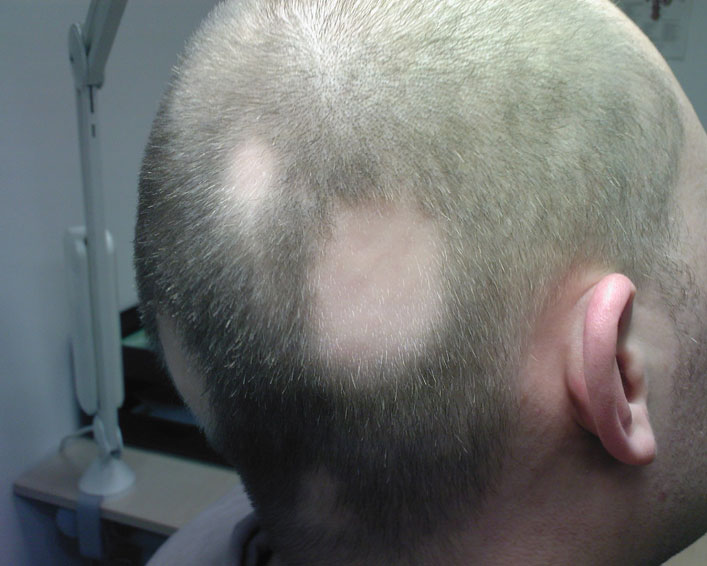HIS Hair Clinic gears up for this important annual event
September officially marks the beginning of Alopecia Awareness Month. Here at HIS, we have been fortunate to treatment many clients who have suffered from various forms of alopecia, each with their own unique story of how the disease has impacted their lives. We’re proud to offer an alternative and a solution to this unfortunate condition and be apart of something provides the client with a renewed confidence and lease on life.
For those unfamiliar with the various forms of alopecia, here’s a quick overview of what is and how it varies.
The most common forms of alopecia are alopecia areata, alopecia totalis, and alopecia universalis. Affecting 1 in 50 people, alopecia areata is the third most common form of hair loss that dermatologists see behind telogen effluvium and androgenetic alopecia.

Similar to rheumatoid arthritis, alopecia areata is an autoimmune disease in which a person’s own immune system attacks the hair follicles causing sudden hair loss. The reason behind why the immune system attacks the hair follicles isn’t clear. Research suggests that certain types of lymphocytes play a role in the hair loss, confusing the hair follicle as a threat to the body and eliminating it.
Alopecia areata can happen to anyone regardless of age or gender. Leaving behind circular bald patches on the scalp, the degree of hair loss ranges from several small patches to much larger areas with extensive loss. Of those affected, 80% will experience a single patch, 2.5% will experience two patches, and 7.7% will experience multiple patches all over the scalp.
Alopecia that affects the entire scalp, leaving a person with no hair on their head whatsoever, is called alopecia totalis. Often recognizable as the individual will not only lack hair on the scalp, but will most likely be missing the hair of their eyebrows as well.
Alopecia that spreads and affects the entire body including the scalp, eyebrow, beard area (which when isolated is called alopecia barbae), pubic hair and anywhere else on the body is called alopecia universalis.
It’s estimated that 1 in every 125,000 men and 1 in every 250,000 will experience alopecia totalis or alopecia universalis.
In addition to hair loss, individuals suffering from different forms of alopecia can experience an increase in the skins sensitivity in the form of a burning sensation or excessive itchiness.
While some individuals can see a full recovery from their alopecia, regardless of treatment received or not, within two years of the condition presenting itself. However, approximately 30% of the individuals find that their condition will persist and experience repeated cycles of hair growth and hair loss.
What causes alopecia?
It’s been widely considered that most forms of alopecia are stress-induced. However, while widely considered, there is little evidence to support that theory, so it is also widely debated.
Stress may play a factor in it triggering forms of alopecia, however, it is now speculated that genetics plays a major role in an individual developing alopecia. Other possible factors: hormones, allergies, viruses, and toxins.

